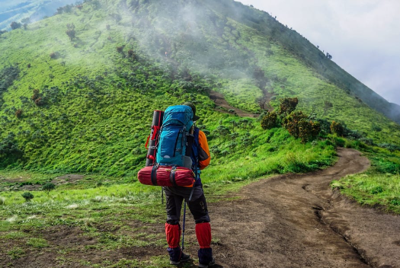
Outdoor trips don’t end when the trail does. After the hike, there’s still wood to stack, fires to build, walks to the creek, and early morning coffee on damp grass. The boots might come off, but that doesn’t mean bare feet or flimsy flip-flops take their place. What goes on next needs to handle the in-between, enough structure for movement, and enough comfort for rest.
Outdoor types have learned that the break from boots is part of the rhythm. Shoes that slip on fast, dry out quickly, and hold up under light pressure are the secret weapon of a good campsite routine.
The Middle Zone Between Rugged and Relaxed
Most outdoor plans aren’t back-to-back summit climbs. There’s a lot of in-between time, and what’s on your feet during those hours shapes how the day feels. Slide into the wrong pair and sore arches or stubbed toes make a slow afternoon feel longer than it needs to.
This is where sandals, especially closed-toe designs, come into play. They give enough breathability to recover from a long hike but still hold up to campground duties or quick trails nearby. A good pair supports movement without demanding the same stiffness or bulk as hiking boots.
Why Recovery Shoes Fall Short Outside
There’s a big market for post-hike recovery footwear. Foam slip-ons, chunky slides, padded sneakers. They feel great at first, but usually fail once outside the cabin or car. Wet grass, uneven paths, and sharp gravel test those soles fast.
A shoe that works outdoors needs grip, ventilation, and just enough coverage to avoid injury. Not a full boot, not a soft slipper. Something in the middle. This is where design matters more than a label.
Materials that drain water, resist odors, and stay light when dirty help shoes handle mixed terrain. Even better when they wash off easily with a hose or river dip.
Sandals That Pull Their Weight Off the Trail
Not every sandal can handle outdoor wear. Some are built for brunch patios, not pine needles and rock dust. But the right pair holds its own.
For men, mens closed toe sandals offer a sweet spot between structure and breathability. The toe protection helps with trail debris and campsite chores, while the open sides keep airflow going. These styles often get overlooked in favor of more athletic-looking footwear, but they tend to last longer in real outdoor conditions.
Straps that adjust without digging in, soles with true grip, and a build that doesn’t collapse after one season. Those are the features that matter more than style tags or trend appeal.
What Outdoor Footwear Should Handle Off the Main Trail
Outdoor sandals or slip-ons need to be more than convenient. To keep up with unpredictable plans and shifting weather, they should pass a few simple checks:
Quick-drying after getting wet
Strong grip on slick or uneven ground
Durable enough for short walks or chores
Easy to clean without specialty tools
Comfortable for standing or walking around for hours
When Shoes Make the Difference at Camp
It’s easy to overlook what gets worn off the trail. But anyone who’s spent a few days outdoors knows the wrong pair of shoes can take over the trip. Too soft, too hot, too slippery—small problems turn into constant irritation.
The right shoe becomes part of the flow. Get up, throw them on, start the fire. Walk to the river. Shake off the sand: no second thoughts, no limping, no blisters forming by surprise.




(0) comments
We welcome your comments
Log In
Post a comment as Guest
Keep it Clean. Please avoid obscene, vulgar, lewd, racist or sexually-oriented language.
PLEASE TURN OFF YOUR CAPS LOCK.
Don't Threaten. Threats of harming another person will not be tolerated.
Be Truthful. Don't knowingly lie about anyone or anything.
Be Nice. No racism, sexism or any sort of -ism that is degrading to another person.
Be Proactive. Use the 'Report' link on each comment to let us know of abusive posts.
Share with Us. We'd love to hear eyewitness accounts, the history behind an article.